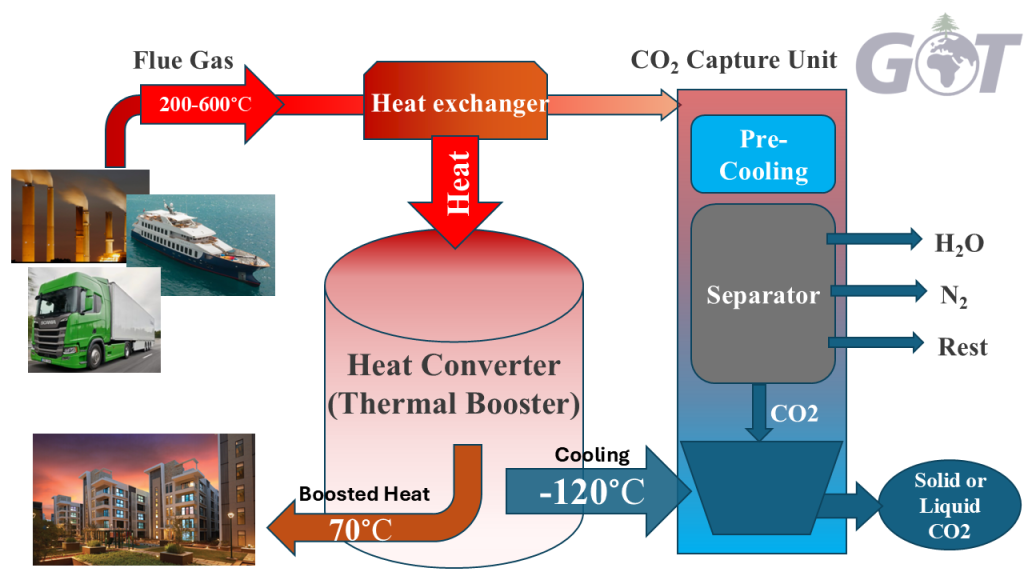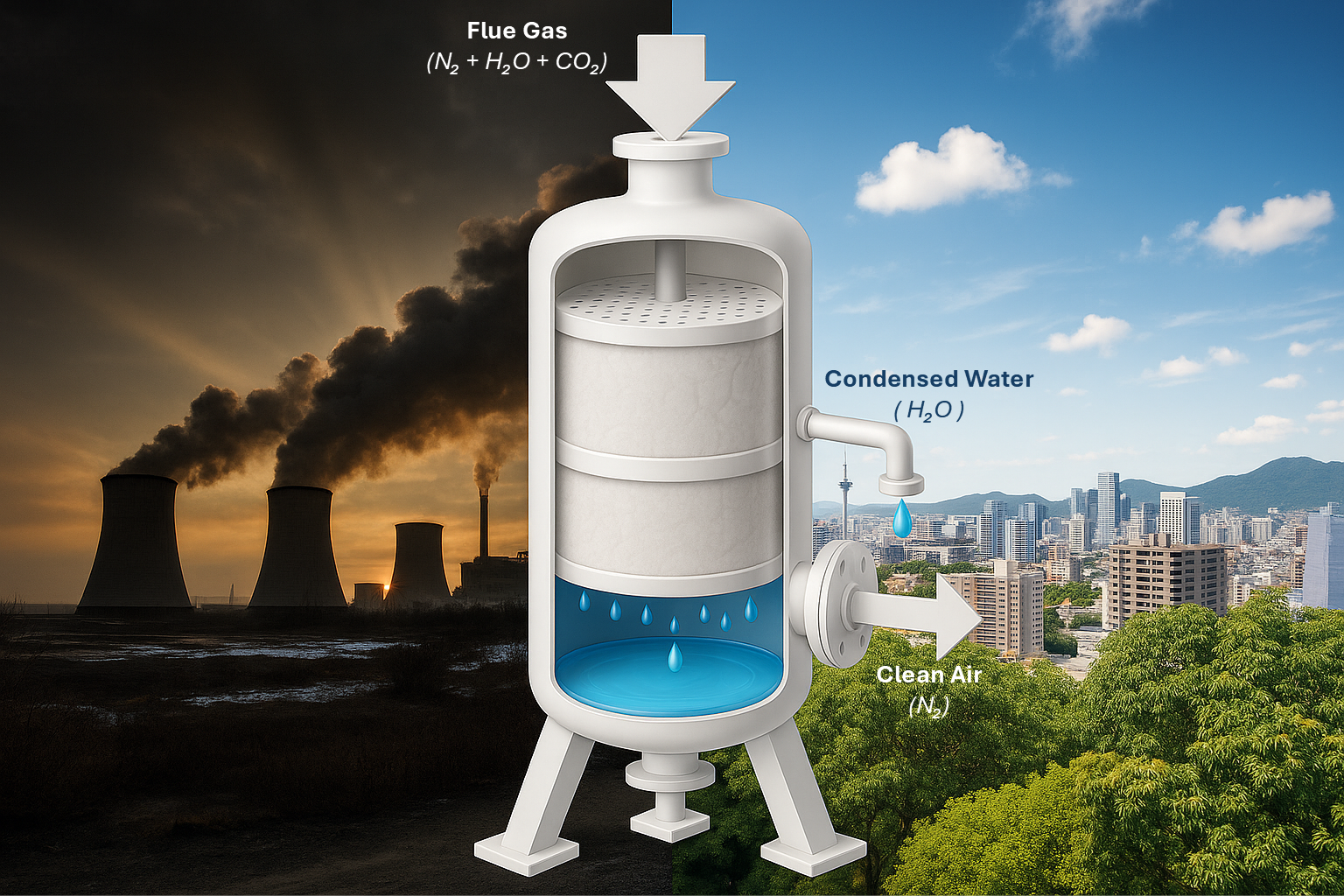Cryogenic Carbon Capture & Heat Boosting (3C-HB)
A new way to capture carbon while delivering useful heat.
The Challenge
Heating and cooling account for almost 50% of global final energy use and more than 15 gigatonnes of CO₂ emissions annually.
Conventional carbon capture methods are costly and energy-intensive:
- Solvent-based CCS consumes large amounts of steam.
- Cryogenic capture requires significant electricity for cooling.
This creates a barrier for industries such as cement, steel, and biofuels, where both energy efficiency and carbon reduction are critical.
Our Solution: 3C-HB
Greenco Tech’s Cryogenic Carbon Capture & Heat Boosting (3C-HB) process integrates cryogenic separation with a heat-driven booster cycle, specifically customized to provide cryogenic cooling on the cold side.

How it works:
- High-temperature heat from flue gas (200–600 °C) or another primary source drives the Thermal Booster.
- On the cold side, the booster lowers flue gases to cryogenic temperatures (around –120 °C), condensing CO₂ into dry ice for efficient separation.
- The cold stream is recycled to pre-cool the incoming flue gas, reducing overall energy demand.
- On the hot side, the booster delivers useful heat that can be supplied as local heating, steam, or process heat.
In simple terms:
- Instead of wasting energy, we recycle cold and heat within the system.
- We capture CO₂ and at the same time deliver valuable, low-cost heat.
Why It Matters
- Lower operating costs – avoids electricity-heavy processes, uses waste heat
- Dual benefit – carbon capture plus useful steam/heat output
- Scalable & modular – containerized units from pilot scale to industry
- Integration ready – designed to work with Thermal Booster and modular thermal storage platforms
Use Cases
The technology is especially suited for applications where heating is needed for process or space heating:
- District Heating & Industry – capture carbon and supply surplus heat
- Cement & Steel – cut CO₂ while generating process steam
- Biofuel Plants & Waste Incineration – reduce emissions with affordable heat recovery
- Future Maritime – potential for onboard OCCS integration
Where We Are Today
We are currently advancing the Booster technology to achieve ultra-low cryogenic temperatures, preparing for validation in real industrial and energy applications.

